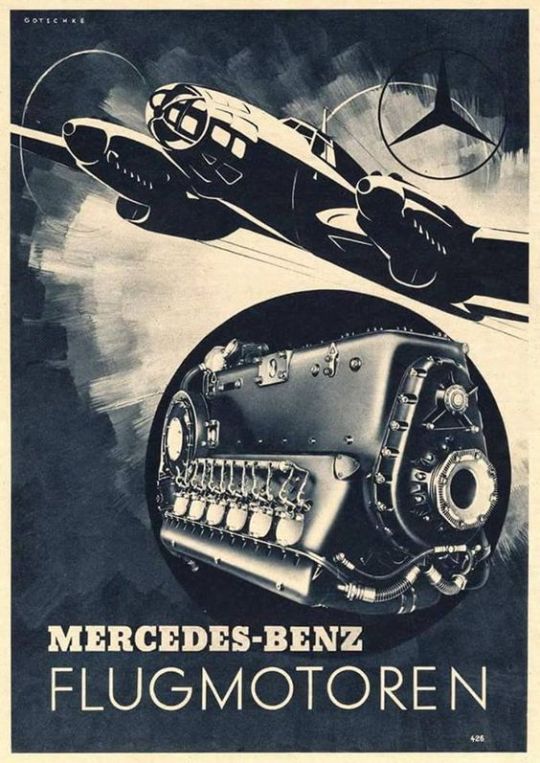#Aircraft Engine
Text

Mechanics. Inside of a WWII Allison aircraft engine.
#yzshot#travel#allison#aircraft engine#aviation engine#wwii#black and white photography#black and white#gears#crankshaft#machinery#engine#motor#power#cutaway
8 notes
·
View notes
Video
3.61.T.JPG Curatorial Object Iamge by SDASM Archives
Via Flickr:
Piction ID: 83759963 Engine, Allison V-1710 F3R aircraft engine; V-12 liquid-cooled engine; V-1710-39--Image from the SDASM Curatorial Collection--Please tag these photos so information can be recorded.---Note: This material may be protected by Copyright Law (Title 17 U.S.C.)--Repository: San Diego Air and Space Museum
8 notes
·
View notes
Text
https://www.marketsandmarkets.com/PressReleases/aircraft-engine.asp
The Aircraft Engine Market was valued at $60.8 billion in 2021 and is estimated to grow from $75.1 Billion in 2023 to $93 Billion by 2026 at a CAGR (Compound Annual Growth Rate) of 8.9%. during the forecast period. Aircraft Engines can be used by different forms of aircraft to improve operational efficiency and be safer and more reliable. Aircraft engines are prominent in narrow-body aircraft, wide-body aircraft, private jets, transport aircraft, fighter aircraft, commercial and military helicopters, UAVs, etc.
Increasing commercial aircraft operations are most likely to drive the growth of aircraft engines in the future. Major countries in Asia Pacific, North America, and Europe are seeing a rise in military operations, which increases the demand for aircraft engines in military aircraft. Also, replacement services will also be a factor in driving the Aircraft Engine Industry. These engines will also emerge useful in UAVs.
#Aircraft Engine#Aircraft Engine Market#Aircraft Engine Industry#Global Aircraft Engine Market#Aircraft Engine Market Companies#Aircraft Engine Market Size#Aircraft Engine Market Share#Aircraft Engine Market Growth#Aircraft Engine Market Statistics
0 notes
Text
Pinnacle Aircraft Engines, located in Silverhill, Alabama, stands as a premier destination for aircraft engine rebuilding. Our dedicated team of experts specializes in breathing new life into your aircraft engines, providing a cost-effective alternative to full replacement.

With years of industry experience and a strong commitment to quality, we ensure that your engine rebuild meets the highest standards of reliability and performance. Our meticulous process involves thorough inspection, component replacement or repair, reassembly, and rigorous testing to ensure your engine operates at peak efficiency.
We take pride in using genuine, high-quality components and advanced technology, adhering to strict industry standards. At Pinnacle Aircraft Engines, transparency and clear communication are paramount, and we stand behind our work with warranties to ensure your peace of mind.
Located in Silverhill, Alabama, our facility is easily accessible to aircraft owners in the region. Choose Pinnacle Aircraft Engines for expert engine rebuilding services that not only extend the life of your aircraft engine but also deliver cost savings without compromising on safety and quality.
1 note
·
View note
Text
Navigating the Seas and Skies: Marine Services and Air Cargo's Symbiotic Relationship

Introduction
The effective transfer of commodities and resources has evolved into a crucial aspect of contemporary civilization in a world characterized by globalization and interconnection. Marine services and air cargo are two of the main participants in this industry. While at first glance they might appear to be separate fields, deeper examination reveals a strong connection that propels global trade and business. The cooperation between maritime and aviation services creates a complex network that supports worldwide logistics, from the delivery of aircraft parts to the exchange of valuable cargo.
The Vital Function of Marine Services
Marine services are the backbone of global trade because they make it possible for cargo ships to transport commodities over great distances. These vessels transport everything from consumer goods to raw resources, acting as floating warehouses. Since the oceans make up more than 70% of the earth's surface, cargo ships must sail complicated routes to link far-off shores, facilitating the interchange of goods on a global scale.
Marine services can include marine traffic management, a system that makes sure that ships can navigate safely and effectively. Ships can be tracked in real-time, optimizing itineraries and avoiding collisions, thanks to innovative technologies like satellite-based tracking systems. This degree of accuracy is necessary to maintain the flow of commodities and avoid supply chain disruptions.
The best timing and routes for cargo ships to depart are also heavily influenced by marine weather forecasts. Shipping businesses can make decisions that protect both their vessels and the cargo they transport by using accurate forecasts of the sea state and impending storms. In this approach, maritime services considerably increase the trustworthiness of international trade.
Air Cargo: Increasing the Supply Chain's Speed
Air cargo leads in terms of speed and urgency, whereas cargo ships handle bulk transit. The desire for prompt delivery of expensive products such perishable foods, medical supplies, and aircraft parts has fueled the expansion of air freight services. Specifically built for carrying freight, cargo planes are able to transport huge cargoes over long distances in a fraction of the time it would take by ship.
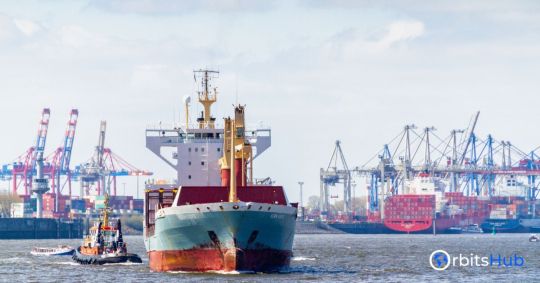
To reduce downtime for repairs and maintenance, aircraft parts, which are essential components in the aviation sector, frequently need to be delivered right away. The aviation industry can maintain smooth operations because to air cargo's capacity to quickly carry these components to their required locations. Air cargo makes sure that essential components, whether they be crucial aircraft engines or specialized equipment, arrive at their destinations quickly, minimizing operating delays.
Synthesis at Work
Air cargo and marine services have a complementary rather than merely antagonistic relationship. Imagine that a multinational company needs to ship aircraft parts to a far-off location. Although quick delivery of the parts might be guaranteed via air cargo tracking, the accompanying expenses might be too high. The maritime industry fills this role. In order to strike a balance between speed and cost-effectiveness, large amounts of less urgent components can be transported by cargo ships, while the more vital components are delivered by air.
Additionally, the partnership goes beyond actual transportation. Similar to those used in marine traffic management, air cargo monitoring systems offer real-time information on the whereabouts of cargo flights. This tracking capability improves transparency and allows businesses to keep an eye on and make necessary adjustments to their supply chain processes. Alternative plans might be made in the event that a cargo aircraft has unanticipated delays to guarantee the prompt delivery of products.
Marine and aviation fuel: feeding the Nexus
Air cargo and maritime industries both rely substantially on fuel to run their operations. To move container ships across seas, the maritime sector needs enormous amounts of marine petroleum, which accounts for a sizeable share of the world's fuel consumption. On the other side, aviation fuel maintains cargo planes in the air, ensuring quick delivery of cargo to its destination.
Innovations in fuel efficiency and alternative energy sources are vital for both industries as the world turns its attention to sustainable practices. The aviation sector invests in research to make air travel more environmentally friendly, while the maritime sector investigates cleaner propulsion systems and fuel alternatives. Both industries' parallel efforts to be sustainable demonstrate their dedication to reducing their negative effects on the environment.
Conclusion
Our integrated global economy is built on the dynamic interaction between marine services and air freight. These two fields work together flawlessly to ensure the quick movement of commodities across great distances, from the transportation of aircraft types to the exchange of precious cargo. The effectiveness and dependability of these services are improved by the development of technology like aviation cargo tracking and marine traffic management.
The difficulty comes from trying to achieve sustainability while preserving this delicate balance as we move forward. The maritime and aviation sectors must keep on innovating to find ways to lower their environmental impact and their carbon footprint. We can ensure the smooth circulation of products while conserving the health of our planet for future generations by nurturing this symbiotic relationship and adopting ethical practices.
#Marine service#air cargo#Aircraft Parts#maritime#cargo aircraft#Air cargo tracking#Aircraft engine#Cargo ship#satellite phone#aviation fuel#Marine traffic#marine weather forecast
1 note
·
View note
Text
Marine and air cargo services converge to improve global trade

Introduction:
Effective transportation infrastructures are crucial for the efficient movement of goods and services in a connected society driven by global trade. The maritime and aviation industries are two important areas that are crucial in this regard. Air cargo has emerged as a quick and dependable means of transportation, whereas marine services have long been a foundation of international trade. In this blog article, we'll look at how technical improvements and creative solutions have helped the fusion of maritime and air cargo services transform the logistics industry.
Marine Services: A Global Trade Anchor
A wide range of operations connected to the transportation of goods and services through waterways are included in marine services. Cargo ships, which frequently transport enormous loads, are the foundation of global commerce. Raw resources, finished goods, and even specialty cargo like hazardous materials are being transported by these vessels. In order to provide safe and effective transportation throughout the oceans, marine services also perform vital support roles like monitoring marine traffic and forecasting marine weather.
Speeding Up Global Logistics Using Air Cargo
Air cargo delivers unmatched speed and efficiency compared to maritime carriers, enabling time-sensitive deliveries across great distances. Cargo aircraft are being used more frequently to transport a wider variety of goods, such as perishable goods, medications, and expensive goods. Systems for tracking air cargo have advanced as well, enabling shippers and recipients to follow the exact location of their shipments in real time. Furthermore, the effectiveness of global supply chains has been substantially aided by the aviation industry's capacity to carry vital components like engine parts and aircraft parts.
Leveraging Technology and Collaboration: The Synergy
Technology developments and improved cooperation between the maritime and aviation industries have made it possible for marine and cargo aircraft services to converge. One such innovation is satellite communication, which permits seamless connectivity across extremely long distances and ensures effective coordination between cargo ships and aircraft. Professionals in the maritime and aviation industries now depend on satellite phones to successfully communicate in distant locations where access to regular communication networks may be constrained.

Furthermore, the intermodal connectivity between marine service and air freight services has strengthened with the use of shared infrastructure, such as airports close to significant seaports. Through this connectivity, it is possible to shift cargo quickly from ships to airplanes or vice versa, cutting down on transit times and increasing overall effectiveness.
Aviation Fuel and Environmental Concerns: Fueling the Convergence
While there are many advantages to the combination of marine and air freight services, there are also some environmental problems, notably with relation to the use of aviation fuel. The sector needs to concentrate on sustainable solutions as demand for air freight rises. The carbon footprint of cargo shipment is being reduced through efforts to find other fuels and enhance fuel economy. More fuel-efficient engines have also been created as a result of technological breakthroughs, further enhancing environmental sustainability.
Consequently, faster, more dependable, and effective transportation of goods and services is now possible because to the convergence of marine and air cargo tracking services. This convergence has improved overall logistics operations by streamlining supply chains and encouraging collaboration between the maritime and aviation sectors. This convergence must, however, prioritize environmental concerns, which calls for ongoing initiatives to reduce the carbon footprint associated with air freight.
As we look to the future, technological developments, increasing sustainability measures, and the expanding demands of global trade will all drive further evolution in the integration of maritime and air cargo boat services. The logistics sector can create a more durable and robust infrastructure that will serve the rising demands of international trade by embracing innovation and placing a high priority on environmental stewardship.
#Marine service#air cargo#Aircraft Parts#maritime#cargo aircraft#Air cargo tracking#Aircraft engine#Cargo ship#satellite phone#aviation fuel#Marine traffic#marine weather forecast
0 notes
Text
The Critical Role of Marine and Air Cargo Services in Navigating the Seas and Skies

Introduction
The effective movement of commodities is essential for international trade and economic expansion in the connected world of today. Marine services and air freight, which offer the capacity to carry enormous quantities of products across great distances, are two important pillars of the logistics sector. This blog examines the value of air and maritime cargo services, demonstrating how crucial they are to the movement of commodities and the health of many businesses. We will also explore the key elements that enable these services, such as satellite phones, aviation fuel, maritime traffic, air cargo tracking, aircraft engines, cargo ships, and aircraft parts and maritime vessel tracking.
Continent Connections through Marine Services
The ability to transfer commodities between continents is made possible through maritime transportation, which is essential to international trade. The mainstay of marine services, cargo ships are capable of transporting enormous volumes of cargo, including consumer products, vehicles, and raw materials. These ships travel the oceans of the world, linking important ports and promoting global trade.
The tracking of cargo is an essential component of marine services. Shippers and logistics service providers can follow the position and condition of their cargo in real-time with the aid of cutting-edge technology, such as satellite-based tracking systems. This improves operational effectiveness while also guaranteeing the safety and prompt delivery of goods.
Air Cargo: Boosting International Trade
Air cargo is crucial for time-sensitive shipments because it offers unsurpassed speed and efficiency while maritime services excel at moving big amounts of cargo. Even the most remote parts of the world can be reached quickly by cargo aircraft because they are outfitted with specialized equipment. Air cargo services deliver them with the highest urgency, whether they are high-value items, medical supplies, or perishable goods.
Engines and aircraft parts are essential to aviation.
Aerial cargo services depend on aircraft parts and engines to be dependable and safe. To guarantee their peak operation, these sophisticated devices go through thorough maintenance and inspection. Suppliers of aircraft parts are essential in delivering the parts required for upgrades, replacements, and repairs. These components maintain the best possible operational state for cargo aircraft's engines, landing gear, and avionics systems.
Satellite phones and Air Cargo Tracking: Ensuring Communication and Security
To maintain security and control during the shipping process, the logistics sector significantly relies on air cargo tracking systems. The position, temperature, and other crucial factors of the shipment are all tracked by real-time tracking systems. This enables shippers and logistics service providers to carefully monitor the movement of products, swiftly resolve any problems, and give consumers precise delivery estimates.
Additionally, satellite phones are essential for communication in remote locations where conventional methods might not be dependable. Satellite phones provide as a lifeline in emergency situations or unforeseen circumstances, allowing ongoing communication between pilots, ground workers, and shipping personnel. The possibility for disruptions to air freight operations is reduced because to these communication systems' quick responses and effective coordination.
The Lifeblood of Air Cargo: Aviation Fuel
Jet fuel, also referred to as aviation fuel, drives cargo planes and maintains the flow of goods throughout the world. In order to maintain ongoing operations, the logistics sector is significantly dependent on a steady supply of aviation fuel. In recent years, concerns about sustainability and fuel economy have grown significantly, prompting the creation of more environmentally friendly substitutes. The goal of ongoing developments in fuel technology is to lessen the environmental impact of the industry and the carbon footprint of air freight services.
Marine Traffic's Contribution to Safe Passage
Marine traffic management has grown crucial due to the rise in the number of cargo ships traveling the oceans. AIS, automated identification systems (AIS), and coastal radar networks allow maritime authorities to detect ship movements, avert collisions, and guarantee safe passage. Systems for managing marine traffic aid in route optimization, ease traffic on congested waterways, and guarantee the prompt delivery of commodities to their final locations.
Conclusion
Services for cargo shipment cargo by air and sea are essential for expanding trade and the global economy. These services are crucial to the logistics sector because they enable the movement of goods across great distances, bridging continents, and accelerating the supply chain. These services remain functional and effective because to the interaction of many different pieces, including aircraft parts, aircraft engines, air freight tracking systems, maritime boats, satellite phones, and aviation fuel. The sea and air cargo industries will develop further as technology advances, enabling faster, safer, and more environmentally friendly global movement of commodities.
#Marine service#air cargo#Aircraft Parts#maritime#cargo aircraft#Air cargo tracking#Aircraft engine#Cargo ship#satellite phone#aviation fuel#Marine traffic
0 notes
Text
The Intersection of Marine Service and Air Cargo is Revolutionizing Logistics

Introduction:
The effective movement of commodities across great distances has long been a priority in the dynamic world of logistics. The marine industry has long been an important actor in global trade, while air freight has grown in popularity due to its speed and dependability. However, the merger of these two businesses has created new opportunities for seamless transportation. In this blog post, we'll look at the symbiotic link between marine service and air cargo, emphasizing the importance of aircraft hangars, air cargo tracking, aircraft engines, cargo ships, and satellite phones in transforming the logistics landscape.
Aircraft Hangars Improve Air Cargo Operations
Aircraft hangars are critical pieces of infrastructure for air cargo operations. These massive structures provide cargo aircraft with cover, maintenance, and repair facilities. Aircraft hangars facilitate the efficient flow of products by preserving the structural integrity of planes and protecting them from harsh weather conditions. These hangars, with their innovative technology and roomy interiors, contribute to faster turnaround times and improved cargo capacity, improving the overall effectiveness of air cargo operations.
Transparency and Security in Air Cargo Tracking
In the logistics business, real-time tracking of aviation freight has become critical. It enables shippers, consignees, and logistics providers to track the location and condition of items throughout the shipping process. Stakeholders can properly forecast delivery schedules, prevent theft or tampering, and solve any operational difficulties that may develop by integrating tracking technology like as GPS and RFID. Air cargo tracking improves openness while also ensuring the safety of valuable and time-sensitive shipments.
The Logistics Ecosystem is Powered by Aircraft Engines
Cargo airplane engines play an important part in the logistics ecosystem. These strong devices provide the push required to move huge objects quickly and efficiently. Constant advances in aviation engine technology have resulted in improved fuel efficiency, lower emissions, and longer flight ranges. Longer flights, shorter delivery times, and improved operational flexibility have all been made possible by the development of more reliable and high-performance engines.
Cargo Ships: The Maritime Trade's Backbone
While air freight provides speed, the maritime industry remains the backbone of global trade due to its ability to handle large amounts of products. Cargo ships transport a diverse range of goods across the world's oceans, providing cost-effective and dependable transportation options. These ships are built to carry a wide range of cargo, including bulk commodities, containerized items, and large packages. Cargo ships supplement air cargo services by utilizing the extensive network of ports and waterways, allowing for seamless multimodal transportation.
Satellite Phones: Communicating in Remote Locations
Communication is critical for coordination, safety, and efficiency in marine and air freight operations. Many places, however, lack dependable terrestrial communication infrastructure. Satellite phones become crucial instruments in such situations for keeping ongoing connectivity. Crew members, logistics operators, and other stakeholders can communicate regardless of their location, ensuring seamless coordination, emergency response, and operational efficiency, especially in remote places or during transoceanic flights.
Conclusion:
The seamless integration of maritime and air cargo services has transformed the logistics business, boosting global trade to new heights. Aircraft hangars, air freight tracking, aircraft engines, cargo ships, and satellite phones are all essential parts of this transformational process. Logistics providers may optimize transportation routes, improve delivery times, and increase customer satisfaction by harnessing the assets of both industries. As technology advances, we may expect further innovations that will revolutionize how things are delivered around the world, resulting in a more connected and efficient logistics ecosystem.
#Marine service#air cargo#aircraft hangars#maritime#cargo aircraft#Air cargo tracking#Aircraft engine#Cargo ship#satellite phone
0 notes
Text
How Engine MRO Demand Will Boost in North America?
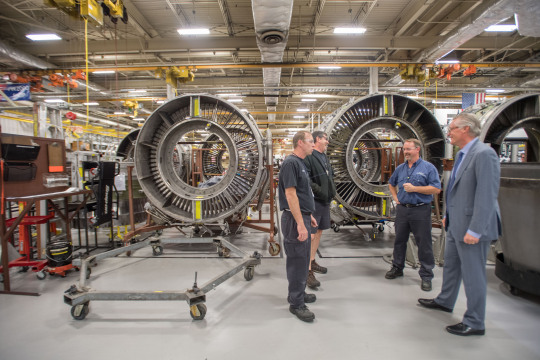
North America is expected to grab 20% of the global engine maintenance repair and overhaul industry during the following ten years. This emphasizes that by 2032, the North American engine fleet will have risen by 7%, from 19,300 operational engines this year to more than 22,200 in 2032.
Over 26,000 engine repair events are anticipated over the next ten years, representing a 0.5% CAGR (compound annual growth rate). Although this number is small, MRO spending should rise by 5% over the next decade, in the majority as a result of the industry’s total growth. Here, aircraft maintenance and repair become major things that flourish in the sector.
In the total of $93.6 billion, North American Engine MRO demand expectations between 2023 and 2032 are mentioned below:
CFM International CFM56 - 24%
General Electric CF6 - 14%
General Electric CF34 - 14%
International Aero Engines V2500 - 9%
General Electric GENX - 8%
General Electric GE90 - 8%
Pratt & Whitney PW4000 - 6%
Rolls-Royce Trent - 5%
Pratt & Whitney PW1000G - 4%
CFM International Leap - 3%
Others - 5%
The CFM International CFM56 is expected to account for the majority of engine MRO aircraft maintenance spending, taking 24.3% of the market, followed by General Electric's CF6 and CF34, all of which have 14% market share.
Top engine MRO demand by North American Airlines is listed below in U.S. billions:
American Airlines - $9.7
United Airlines - $7.5
Delta Air Lines - $7.0
Southwest Airlines - $6.1
SkyWest Airlines - $3.7
Spirit Airlines - $3.3
JetBlue - $2.9
Air Canada - $2.8
Frontier Airlines - $2.1
Endeavor Air - $1.6
0 notes
Text
Aircraft Engine Market Sales Statistics, Key Players, Growth Projection Outlook to 2032 | Barnes Group Inc., Continental Motors Group, General Electric Company, Honeywell International Inc
Aircraft Engine Market Sales Statistics, Key Players, Growth Projection Outlook to 2032 | Barnes Group Inc., Continental Motors Group, General Electric Company, Honeywell International Inc
A recent market research report added to repository of insightSLICE is an in-depth analysis of Global Aircraft Engine Industry. On the basis of historic growth analysis and current scenario of Aircraft Engine industry place, the report commits to offer actionable insights for the industry participants. Authenticated data presented in report is based on exhaustive primary and secondary research.…

View On WordPress
0 notes
Photo
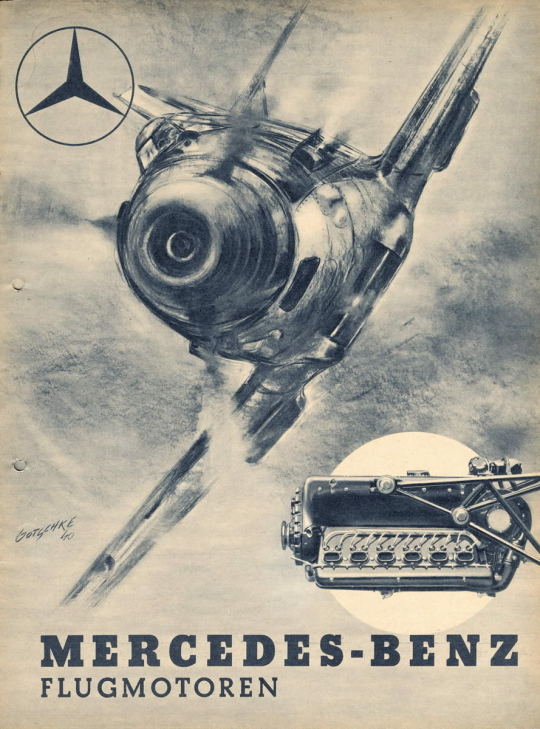
Messerschmitt Bf 109. Mercedes-Benz Flugmotoren
122 notes
·
View notes
Link
[222 Pages Report] The Aircraft Engine Market size is expected to reach USD 92.9 billion by 2026 from USD 60.8 billion in 2021, at a CAGR of 8.9% from 2021 to 2026.
0 notes
Video
58.213.A.JPG Curatorial Object Iamge by SDASM Archives
Via Flickr:
Piction ID: 83760896 Engine, Lawrance 75B, 5 cylinder APU radial; Used on PB2Y-3, PBM & B-29 aircraft--Image from the SDASM Curatorial Collection--Please tag these photos so information can be recorded.---Note: This material may be protected by Copyright Law (Title 17 U.S.C.)--Repository: San Diego Air and Space Museum
6 notes
·
View notes
Text
#Aircraft Engine#Aircraft Engine Market#Aircraft Engine Industry#Aircraft Engine Market Trends#Aircraft Engine Market Report#Aircraft Engine Market Value#Aircraft Engine Market Forecast#Aircraft Engine Market Growth
0 notes
Text
Aircraft Microturbine Engine Market 2022 With Top Countries Data 2030
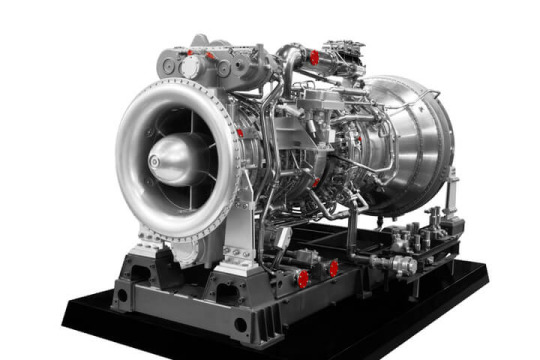
The COVID-19 pandemic has a considerable impact on the aircraft microturbine engine market. The outbreak of pandemic has led to major lockdown situations in most of the countries across the world. During this period, the utilization of drones and eVTOL has increased due to their efficiency in population surveillance during the lockdown period. The majority of the developed, as well as developing countries prefer to use drones to keep an eye on the population and ensure their safety. For instance, in March 2020, EHang, one of the China-based aircraft manufacturers offered 61 passenger grade drones for the surveillance of the general population. Such types of activities represent the vast applicability of these machines during viral outbreaks. During this unprecedented situation, we are helping our clients in understanding the impact of COVID19 on the global aircraft microturbine engine market.
Our report includes:
Technological Impact
Social Impact
Investment Opportunity Analysis
Pre- & Post-COVID Market Scenario
Infrastructure Analysis
Supply Side & Demand Side Impact
As per a new report published by Research Dive, the global aircraft microturbine engine market is set to generate revenue of $125.2 million by 2029, at a CAGR of 9.5% during the forecast period. The segmentation of the market has been done based on end-use, engine type, platform, horsepower, fuel type, application, and region. The report provides in-depth insights on drivers, vital segments, opportunities, restraints, and key players of the market. As per our analyst estimates, low operating & maintenance costs are significant factors accelerating the growth of the aircraft microturbine engine market. However, the higher acquisition cost of microturbine engines has obstructed the growth of the global aircraft microturbine engine market.
Get an access to the all-inclusive PDF Sample of Aircraft Microturbine Engine Market@ https://www.researchdive.com/download-sample/192
OEM to Dominate the Market during the Forecast Period
Based on end-use, the global market for aircraft microturbine engines is segmented into OEM and aftermarket. The OEM market accounted for $83.9 million in revenue in 2029 and is expected to grow at 8.9% CAGR. The growth of the OEM segment is primarily attributed to its cost benefits which are directly related to the minimal cost of production.
Based on engine type, the global market is segmented into turbojet MTE and turboshaft MTE. The market size for the turboshaft MTE segment accounted for $65.1 million in 2029 and is all set to rise at a CAGR of 10.3% during the period of forecast. Higher adoption of turboshaft MTE for the incorporation of the majority of aircrafts is likely to drive the segment growth.
VTOL Segment to be Most Lucrative
Based on the platform, the global market for aircraft microturbine engine is classified into VTOL, air taxi, cargo aerial vehicle, ultra-light aircraft, business jet, military trainer aircraft, and military unmanned aerial vehicles. The market size for VTOL was $27.5 million in 2029 and is estimated to grow at 10.8% CAGR. Higher adoption of military unmanned aerial vehicles is anticipated to offer growth for the segment in the global market.
Based on horsepower, the global market is segmented into 5-50 HP, 50-100 HP, and 100-200 HP. 5-20 HP horsepower segment generated a revenue of $27.5 million in 2029 and is anticipated to grow at 10.8% CAGR during the period of forecast.
Biofuel to Hold Significant Market Share
Based on fuel type, the global market for aircraft microturbine engine is classified into kerosene, diesel, Jet-A, biofuel, and synthetic fuel. The market size for biofuel was $53.6 million in 2029 and is estimated to grow at 10.4% CAGR. The significant consumption of biofuels is predicted to contribute to the segment growth.
Based on application, the global market is segmented into civil, urban air mobility, and unmanned military. The urban air mobility segment generated a revenue of $32.5 million in 2029 and is anticipated to grow at 10.0% CAGR during the period of forecast.
Speak to Analyst or Schedule a Call to get more Insights of Aircraft Microturbine Engine Market@ https://www.researchdive.com/connect-to-analyst/192
Geographical Analysis and Major Market Players
Based on region, the global aircraft microturbine engine market is segmented into North America, Europe, Asia Pacific, and LAMEA. The Asia-Pacific aircraft microturbine engine market accounted for $32.4 million in 2029 and is anticipated to rise at 10.0% CAGR throughout the forecast period. The developing economy and increasing investments in aircraft technologies are expected to offer a lucrative opportunity for the Asia Pacific market growth.
The major players of the global aircraft microturbine engine market include UAV Turbines, Inc., Honeywell International Inc, Rolls-Royce plc, Kratos Defense & Security Solutions, Inc., Elliott Group, AeroDesignWorks GmbH, JetsMunt SL, GE, AMT Netherlands B.V., and PBS Group.
#Aircraft Microturbine Engine Market#Aircraft Microturbine Engine#COVID-19 Impact#Microturbine#Aircraft Engine#Aerospace & Defense#Aerospace#Aviation#Airplane
1 note
·
View note
